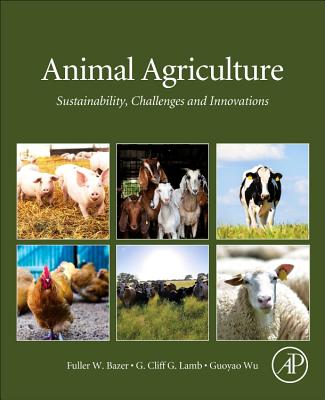Bioinformatics Technologies
暫譯: 生物資訊技術
Yi-Ping Phoebe Chen
- 出版商: Demos Medical Publis
- 出版日期: 2005-01-18
- 售價: $1,150
- 貴賓價: 9.8 折 $1,127
- 語言: 英文
- 頁數: 396
- 裝訂: Hardcover
- ISBN: 3540208739
- ISBN-13: 9783540208730
-
相關分類:
生物資訊 Bioinformatics
下單後立即進貨 (約5~7天)
買這商品的人也買了...
-
 ASP.NET 程式設計徹底研究
ASP.NET 程式設計徹底研究$590$466 -
 $1,007C How to Program, 4/e
$1,007C How to Program, 4/e -
 數位影像處理 (Digital Image Processing, 2/e)
數位影像處理 (Digital Image Processing, 2/e)$820$804 -
 鳥哥的 Linux 私房菜─基礎學習篇增訂版
鳥哥的 Linux 私房菜─基礎學習篇增訂版$560$476 -
 $1,102Unix Network Programming, Vol. 1 : The Sockets Networking API, 3/e (IE-Paperback)
$1,102Unix Network Programming, Vol. 1 : The Sockets Networking API, 3/e (IE-Paperback) -
 Project 2003 徹底研究
Project 2003 徹底研究$690$538 -
 Windows 驅動程式設計指南 (Programming the Microsoft Windows Driver Model, 2/e)
Windows 驅動程式設計指南 (Programming the Microsoft Windows Driver Model, 2/e)$890$703 -
 Linux iptables 技術實務─防火牆、頻寬管理、連線管制
Linux iptables 技術實務─防火牆、頻寬管理、連線管制$620$490 -
 Web CSS 網頁樣式設計學 (Cascading Style Sheets Standard Design Guide)
Web CSS 網頁樣式設計學 (Cascading Style Sheets Standard Design Guide)$580$452 -
 Oracle Database 10g DBA 技術手冊 (Oracle Database 10g DBA Handbook)
Oracle Database 10g DBA 技術手冊 (Oracle Database 10g DBA Handbook)$990$842 -
 深入淺出 Java 程式設計, 2/e (Head First Java, 2/e)
深入淺出 Java 程式設計, 2/e (Head First Java, 2/e)$880$695 -
 SIP 會談啟始協議操典
SIP 會談啟始協議操典$680$537 -
 Linux Kernel 完全剖析
Linux Kernel 完全剖析$750$585 -
 Dreamweaver 8 魔法書中文版
Dreamweaver 8 魔法書中文版$490$387 -
 CSS 功能索引式參考手冊
CSS 功能索引式參考手冊$390$308 -
 SQL Server 2005 資料庫開發聖經
SQL Server 2005 資料庫開發聖經$890$757 -
 CSS、HTML、XHTML 精緻範例辭典
CSS、HTML、XHTML 精緻範例辭典$450$356 -
 Linux 驅動程式, 3/e (Linux Device Drivers, 3/e)
Linux 驅動程式, 3/e (Linux Device Drivers, 3/e)$980$774 -
 Text Mining Application Programming (Paperback)
Text Mining Application Programming (Paperback)$2,100$1,995 -
 Linux 作業系統之奧義
Linux 作業系統之奧義$480$408 -
 $990CCNP ONT Official Exam Certification Guide (Hardcover)
$990CCNP ONT Official Exam Certification Guide (Hardcover) -
 軟體測試實務講座─來自矽谷的技術經驗與心得分享
軟體測試實務講座─來自矽谷的技術經驗與心得分享$290$226 -
 現代嵌入式系統開發專案實務-菜鳥成長日誌與專案經理的私房菜
現代嵌入式系統開發專案實務-菜鳥成長日誌與專案經理的私房菜$600$480 -
 $990Microsoft Exchange Server 2007: Tony Redmond's Guide to Successful Implementation (Paperback)
$990Microsoft Exchange Server 2007: Tony Redmond's Guide to Successful Implementation (Paperback) -
 $399CCNP ISCW Official Exam Certification Guide
$399CCNP ISCW Official Exam Certification Guide
相關主題
商品描述
Description
Solving modern biological problems requires advanced computational methods. Bioinformatics evolved from the active interaction of two fast-developing disciplines, biology and information technology. The central issue of this emerging field is the transformation of often distributed and unstructured biological data into meaningful information.
This book describes the application of well-established concepts and techniques from areas like data mining, machine learning, database technologies, and visualization techniques to problems like protein data analysis, genome analysis and sequence databases. Chen has collected contributions from leading researchers in each area. The chapters can be read independently, as each offers a complete overview of its specific area, or, combined, this monograph is a comprehensive treatment that will appeal to students, researchers, and R&D professionals in industry who need a state-of-the-art introduction into this challenging and exciting young field.
![]()
商品描述(中文翻譯)
**描述**
解決現代生物問題需要先進的計算方法。生物資訊學是生物學和資訊技術這兩個快速發展的學科之間積極互動的產物。這個新興領域的核心問題是將經常分散且無結構的生物數據轉換為有意義的信息。
本書描述了如何將數據挖掘、機器學習、數據庫技術和可視化技術等領域的成熟概念和技術應用於蛋白質數據分析、基因組分析和序列數據庫等問題。陳博士收集了各領域領先研究者的貢獻。各章節可以獨立閱讀,因為每一章都提供了其特定領域的完整概述;或者,這本專著結合起來,將為需要對這個充滿挑戰和激動人心的新興領域進行最先進介紹的學生、研究人員和產業研發專業人士提供全面的處理。
**目錄**
**前言 ...................................................................................................V**
**1 生物資訊學導論............................................................1**
1.1 介紹 ...................................................................................1
1.2 生物資訊學技術的需求 ...........................................2
1.3 生物資訊學技術概述 ..............................................5
1.4 各章節簡要討論 ....................................................8
參考文獻.........................................................................................12
**2 結構生物資訊學概述.............................................15**
2.1 介紹 .................................................................................15
2.2 結構生物資訊學的組織 ...........................................17
2.3 主要資源:蛋白質數據庫 ......................................18
2.3.1 數據格式 ..................................................................18
2.3.2 數據增長 ..................................................................18
2.3.3 數據處理與質量控制 ..........................................20
2.3.4 PDB的未來 ............................................................21
2.3.5 可視化 ........................................................................21
2.4 次要資源與應用 ....................................................22
2.4.1 結構分類 ................................................................22
2.4.2 結構預測 ................................................................28
2.4.3 結構基因組中的功能分配 ................................30
2.4.4 蛋白質-蛋白質相互作用 ......................................32
2.4.5 蛋白質-配體相互作用 ..........................................34
2.5 在藥物設計中使用結構生物資訊學方法 ...............37
2.6 未來 ................................................................................39
2.6.1 多資源整合 ........................................................39
2.6.2 結構基因組的影響 .............................................39
2.6.3 結構生物資訊學在系統生物學中的角色 ........39
參考文獻.........................................................................................40
**3 生物資訊學中的數據倉儲.........................................45**
3.1 介紹 .................................................................................45
3.2 生物資訊學數據 ......................................................48
3.3 將數據轉化為知識 ..................................................51
3.4 數據倉儲 ......................................................................54
3.5 數據倉儲架構 ..........................................................56
3.6 數據質量 ......................................................................58
3.7 總結 ................................................................................60
參考文獻.........................................................................................61
**4 生物資訊學中的數據挖掘 ......................................63**
4.1 介紹 .................................................................................63
4.2 生物醫學數據分析 ..................................................64
4.2.1 主要核苷酸序列數據庫、蛋白質序列數據庫和基因表達數據庫 ........65
4.2.2 生物資訊學研究的軟體工具 .................................68
4.3 DNA數據分析 ..........................................................71
4.3.1 DNA序列 ..................................................................71
4.3.2 DNA數據分析 ......................................................76
4.4 蛋白質數據分析 .......................................................92
4.4.1 蛋白質和氨基酸序列 ...........................................92
4.4.2 蛋白質數據分析 ..................................................99
參考文獻.......................................................................................109
**5 生物資訊學中的機器學習 ...................................117**
5.1 介紹 .................................................................................117
5.2 人工神經網絡 ............................................................120
5.3 神經網絡架構與應用 ..............................................128
5.3.1 神經網絡架構 ....................................................128
5.3.2 神經網絡學習算法 ..............................................131
5.3.3 生物資訊學中的神經網絡應用 ..........................134
5.4 遺傳算法 ......................................................................135
5.5 模糊系統 ......................................................................141
參考文獻.......................................................................................147
**6 系統生物技術:生物技術發展中的新範式 ........155**
6.1 介紹 .................................................................................155
6.2 為什麼選擇系統生物技術? ....................................156
6.3 系統生物技術的工具 ..............................................158
6.3.1 基因組分析 ..........................................................158
6.3.2 轉錄組分析 ..........................................................159
6.3.3 蛋白質組分析 .......................................................161
6.3.4 代謝組/流量組分析 .............................................163
6.4 整合方法 ......................................................................164
6.5 細胞過程的計算建模與模擬 ..................................166
6.5.1 統計建模 ................................................................167
6.5.2 動態建模 ................................................................169
6.6 結論 ................................................................................170
參考文獻.......................................................................................171
**7 基於Petri網架構的生物過程計算建模 ............179**
7.1 介紹 .................................................................................179
7.2 混合Petri網與混合動態網 ....................................183
7.3 混合功能Petri網 ......................................................190
7.4 帶擴展的混合功能Petri網 ......................................191
7.4.1 定義 ..........................................................................191
7.4.2 與其他Petri網的關係 ..........................................197
7.4.3 在基因組對象網中實現HFPNe ..........................198
7.5 使用HFPNe建模生物過程 ......................................198
7.5.1 從DNA到真核生物的mRNA – 可變剪接 ..........199
7.5.2 mRNA的翻譯 – 框移 ...........................................203
7.5.3 亨廷頓病 ..............................................................203
7.5.4 蛋白質修飾 – p53 ..................................................207
7.6 與HFPNe相關的工作 ................................................211
7.7 基因組對象網:GON ................................................212
7.7.1 GON的特徵源自HFPNe的特徵 .........................214
7.7.2 GON GUI及其他特徵 ...........................................214
7.7.3 GONML及與GONML相關的工作 .......................220
7.7.4 與GON相關的工作 ..............................................222
7.8 可視化工具 ....................................................................































